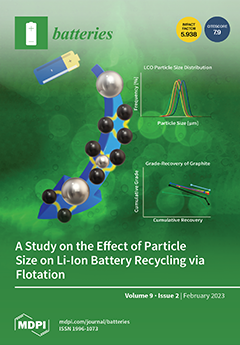Advanced carbon materials have played an important function in the field of energy conversion and storage. The green and low-carbon synthesis of elemental carbon with controllable morphology and microstructure is the main problem for carbon materials. Herein, we develop a green and low-carbon method to synthesize porous carbon by reacting CO
2 with LiAlH
4 at low temperatures. The starting reaction temperatures are as low as 142, 121, and 104 °C for LiAlH
4 reacting with 1, 30, and 60 bar CO
2, respectively. For the elemental carbon, the porosity of elemental carbon gradually decreased, whereas its graphitization degree increased as the CO
2 pressure increased from 1 bar to 60 bar. CO
2 serves as one of the two reactants and the CO
2 pressure can adjust the thermodynamic and kinetic properties of the formation reaction for synthesizing elemental carbon. The mechanism for CO
2 pressure-dependent microstructure and morphology of carbon is discussed on the basis of the formation reaction of elemental carbon and gas blowing effect of H
2 and CO
2. The elemental carbon with different morphology and microstructure exhibits distinct electrochemical lithium storage performance including reversible capacity, rate capability, cycling stability, and Coulombic efficiency, owing to their different lithium storage mechanism. The elemental carbon synthesized at 30 bar CO
2 delivers the highest reversible capacity of 506 mAh g
−1 after 1000 cycles even at 1.0 A g
−1. Advanced energy storage technology based on the green and low-carbon synthesis of carbon materials is a requisite for providing a stable and sustainable energy supply to meet the ever-growing demand for energy.
Full article





